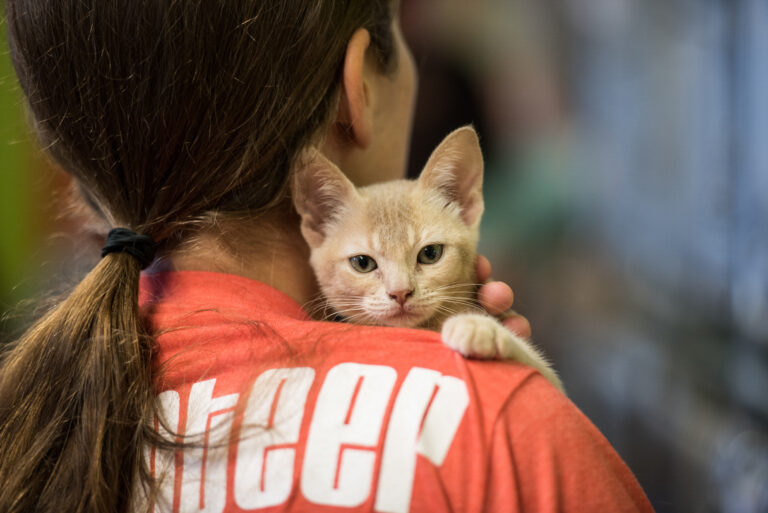As the fresh energy of spring fills the air, you might notice your cat becoming more active and curious. While the longer days and warmer temperatures can be invigorating for cats, they may also bring a resurgence of problematic behaviors—particularly scratching furniture. Scratching is an instinctive behavior in cats, but when it’s targeted at your favorite sofa or chairs, it can be frustrating. Thankfully, understanding why your cat scratches and providing appropriate outlets can help you redirect this natural behavior away from your furniture.
Table of Contents
Why Cats Scratch
Scratching is much more than just a bad habit—it serves multiple important purposes for cats. Firstly, scratching helps cats shed the outer layer of their claws, keeping them sharp and healthy. Secondly, it allows them to stretch their muscles, particularly in the shoulders and back, contributing to their overall physical well-being. Additionally, scratching is a form of territorial marking. Cats have scent glands in their paws, and by scratching, they leave both a visual and scent marker, signaling ownership of their space.
With spring’s arrival, cats may feel an instinctual urge to reaffirm their territory, explore more, and scratch more often due to increased daylight and energy levels. This makes spring the perfect time to address unwanted scratching and guide your cat toward better alternatives.
Provide Appropriate Scratching Surfaces
One of the most effective ways to stop your cat from scratching furniture is to provide multiple appealing scratching posts or surfaces. Cats prefer certain textures and orientations when scratching, so offering variety increases the likelihood they’ll choose acceptable outlets.
Start by observing whether your cat prefers vertical or horizontal scratching. Some cats enjoy tall posts to stretch upwards, while others prefer flat pads or mats. Look for materials like sisal rope, cardboard, or carpet, as these tend to be favorites.
Position the scratching posts strategically. Place them near areas your cat already scratches—like next to the sofa or armchair—as well as in commonly used rooms. Ensure posts are sturdy and tall enough for your cat to stretch fully.
Use Positive Reinforcement
Encouraging your cat to use scratching posts requires positive reinforcement. Each time your cat uses an appropriate scratching surface, reward them immediately with treats, affection, or play. This reinforces the idea that scratching posts are rewarding and satisfying.
You can also sprinkle catnip or use catnip spray on the posts to make them even more appealing. Some cats respond well to interactive play sessions around the post, using a wand toy to get them engaged and lead them to the correct spot.
Make Furniture Less Appealing
While providing suitable scratching outlets, it’s equally important to make furniture less attractive for scratching. Start by temporarily covering favorite scratching spots with materials cats dislike, such as double-sided tape, aluminum foil, or plastic mats. These textures discourage scratching and make the surface less enjoyable.
Additionally, try using feline-safe deterrent sprays designed to repel cats without causing harm. Reapply regularly, especially after cleaning or when you notice your cat approaching the furniture.
Keep Claws Trimmed
Regularly trimming your cat’s claws can reduce the damage caused by scratching. Shorter claws are less sharp and less likely to snag or tear furniture fabric. Aim to trim every 2-3 weeks, and if your cat is unfamiliar with claw trimming, introduce the process gradually using treats and gentle handling.
Never declaw your cat, as this is a painful and harmful procedure that can lead to long-term physical and behavioral issues. Focus instead on redirection and management strategies.
Manage Stress and Boredom
Springtime often brings changes, such as open windows, increased outdoor noises, or visitors. These can stress your cat, leading to more territorial scratching. Reducing stress through consistent routines, access to quiet hiding spots, and regular playtime can help curb excessive scratching behavior.
Boredom is another common trigger. Enrich your cat’s environment with toys, puzzle feeders, and climbing structures to keep them mentally stimulated and physically satisfied. A well-exercised, content cat is less likely to resort to destructive habits.
Be Patient and Consistent
Changing your cat’s scratching habits takes time. Stay patient and consistent, reinforcing positive behaviors while minimizing access to furniture. Avoid punishment, as it can increase stress and damage your relationship with your cat. Instead, focus on redirecting their energy in a way that satisfies their instincts without sacrificing your home’s condition.
In Conclusion

Scratching is a natural and healthy behavior for cats, but it doesn’t have to ruin your furniture. By understanding the reasons behind scratching and providing appropriate alternatives, you can guide your cat to scratch in acceptable places. With the right combination of scratching posts, positive reinforcement, environmental enrichment, and a little patience, your cat will happily redirect their springtime energy away from your cherished sofa and toward better outlets.







